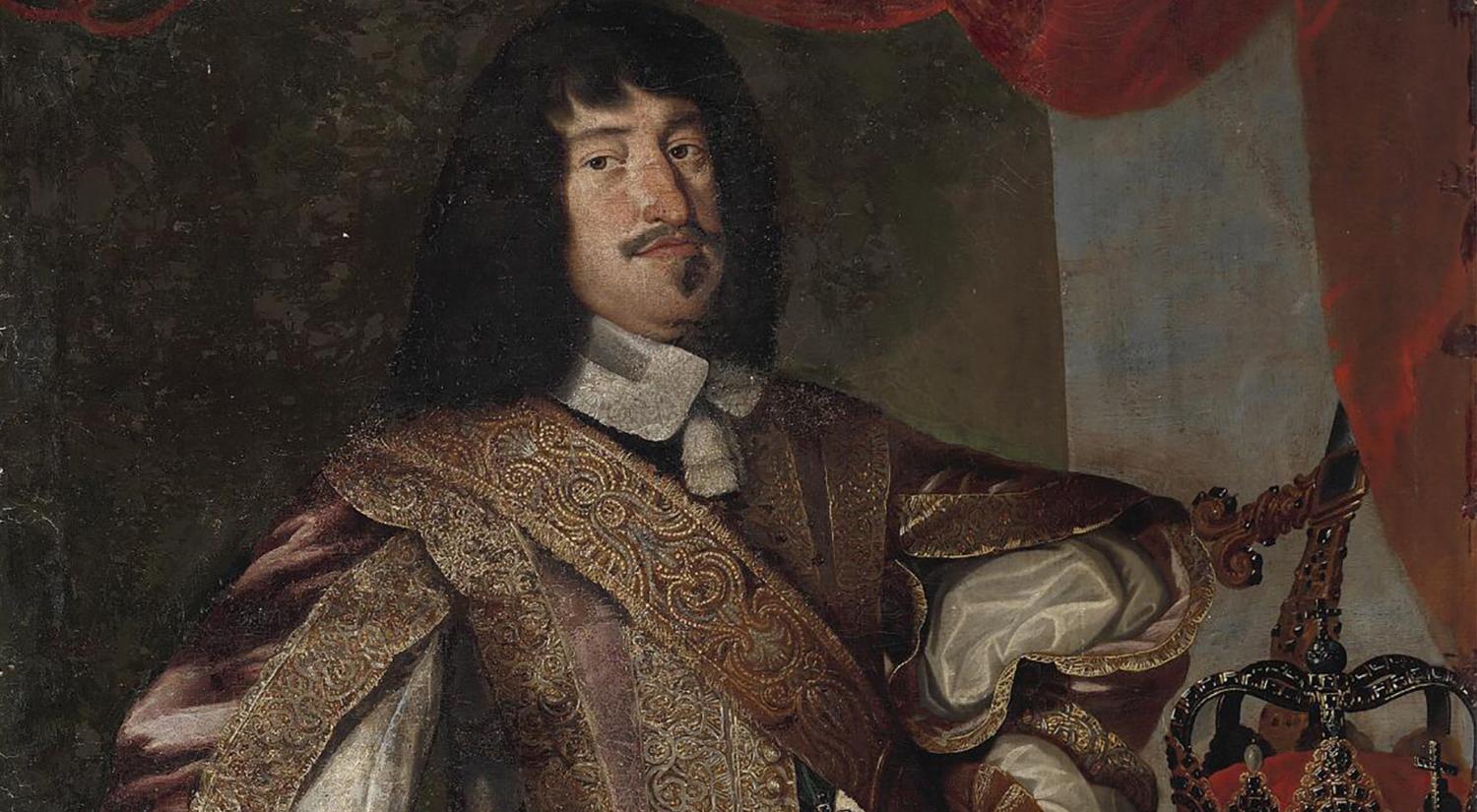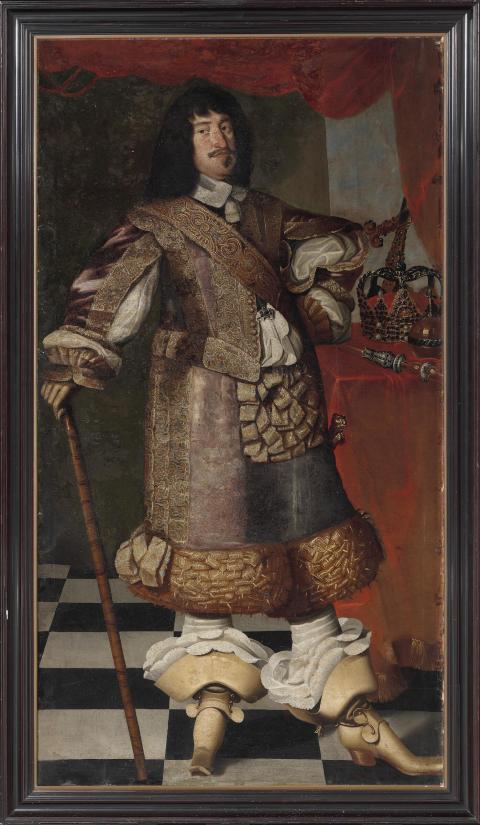Frederik III (1609–1670) stands straight-backed, dressed in French fashion with lavish embroidered ornamentation and a wealth of bows and folded ribbons. In the middle of this textile chaos, the Order of the Elephant hangs from a blue ribbon under the wide sword belt. The narrow boots under the voluminous trouser legs stand out with their large turn-down collars. On the table, we see a display of the regalia and insignia of the absolute monarch: the orb, the sword of state, the sceptre and the ‘modernized’ crown, which had previously belonged to Christian IV but had new details added for Frederik III’s coronation. The fact that Frederik III is presented alongside the regalia suggests that the occasion for the painting may well have been his coronation in 1648.
Significant depiction
It is this precise depiction of tiny details that makes Dittmers’s painting stand out from other full-length portraits of Frederik III. With impressive technical skill Dittmers highlights significant components of the individual artefacts, particularly in the clothing. The royal collections include many garments from the time of Frederik III. However, according to the Royal Danish Collection, none of the outfits in the Rosenborg collection resemble the one depicted here by Dittmers in such rich detail. The Royal Danish Collection also regards the painting as one of the finest depictions of the ‘modernized’ crown. Few paintings in existence today portray it as convincingly as Dittmers’s. In this way, the royal portrait makes an important contribution to the study of fashion history.
Collection context
Due to the high cultural-historical significance of the portrait, both the New Carlsberg Foundation and the Augustinus Foundation found it relevant to support the acquisition. Now it is included in the presentation at Koldinghus, Jutland’s last remaining royal castle. Throughout its long history, the castle has played a key role both as a royal residence and as part of the frontier defence.
About Gerdt Dittmers
The German painter Gerdt Dittmers (?–1672) was born into an artistic family from Hamburg and is widely believed to have been the brother of the accomplished painter Heinrich Dittmers (1625–1677). During the 1650s, Gerdt Dittmers worked in Copenhagen. Among the small number of known works attributed to him is a cylindrical anamorphosis of Frederik III and Sophie Amalie, commissioned by the King himself in 1656. A counterpart to the acquired royal portrait at Løvenholm Manor in Djursland, Denmark, is also attributed to Dittmers.




